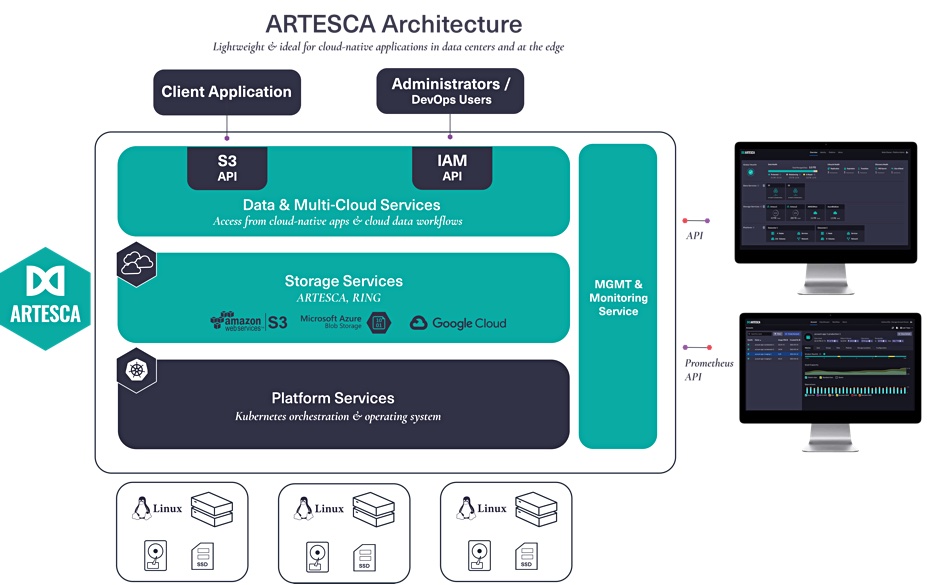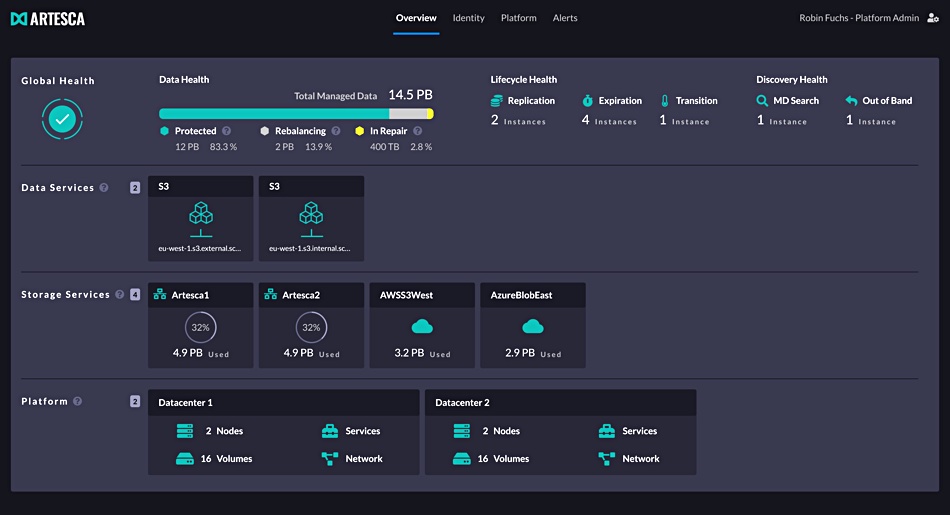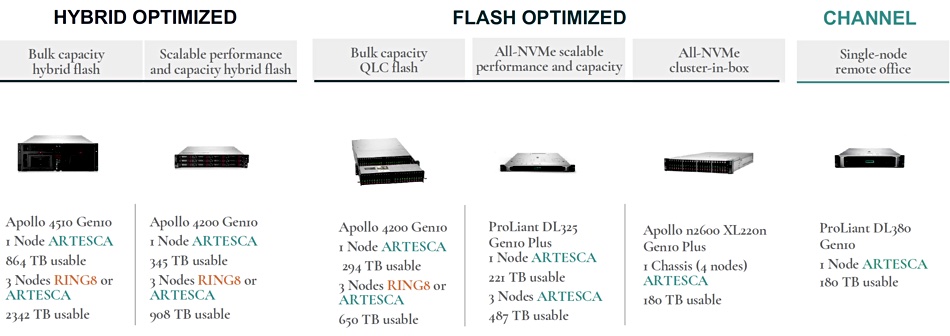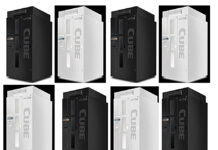Scality has popped the lid on ARTESCA, its new cloud-native object storage, co-designed with HPE, that is available alongside its existing RING object storage product.
Artesca configurations start with a single Linux server and then scale out, whereas the RING product requires a minimum of three servers. The Kubernetes-orchestrated ARTESCA container software runs on x86 on-premises servers with HPE having an exclusive licence to sell them for six months.
A statement from Randy Kerns, senior strategist and analyst at the Evaluator Group, said: “Scality has figured out a way to include all the right attributes for cloud-native applications in ARTESCA: lightweight and fast object storage with enterprise-grade capabilities.”
Scality chief product officer Paul Speciale told us: “We believe object storage is emerging as primary storage for Kubernetes workloads, with no need for file and block access.”

ARTESCA uses the S3 interface and storage provisioning for stateful containers is done through its API. There is no POSIX. Artesca has a global namespace that spans multiple clouds and can replicate its object data to S3-supporting targets, and Scality’s RING storage. Speciale said Scality is “working on an S3-to-tape interface” with tape-held data included in the ARTESCA namespace.
The software can integrate with Veeam, Splunk, Vertica and WekaIO via S3, provisioning data services to them. Existing RING or cloud data can be imported into ARTESCA’s namespace.
The software features multi-tenancy and its management GUI supports multiple ARTESCA instances, both on-premises and in multiple public clouds – AWS, Azure, GCP:

ARTESCA has built-in metadata search and workflows across private and public clouds.
Scality says it has high performance with ultra-low latency and tens of GB/s of throughput per server, although actual performance numbers are still being generated in the HPE lab and in actual deployments. We can expect them to be available in a couple of months.
The product has dual-layer erasure coding, local and distributed, to protect against drive and server failure. If a disk fails, the server has enough information to self-heal the data locally, with no time-sapping network IO needed. If a full server fails, the distributed codes can self-heal the data to the remaining servers in the cluster. They work in parallel to accelerate the recovery process. Lecat said this scheme makes high-capacity disk drive object storage reliable.
ARTESCA has been developed to support many Kubernetes distributions. It should run with VMware’s Tanzu system and with HPE Ezmeral, although Lecat adds that both need to be validated.
Target application areas include cloud-native IoT edge deployments, AI and machine learning and big data analytics. There is an initial supportive ecosystem including CTERA, Splunk, Veeam and Veeam’s Kasten business, Vertica and WekaIO.
HPE configs
There are six ARTESCA configurations available from HPE, suitable for core and edge data centre locations and including Apollo and Proliant servers in all-flash and hybrid flash/disk versions:

Chris Powers, HPE VP and GM for collaborative platforms and big data, said in a statement: “Combined with a new portfolio of six purposefully configured HPE systems, ARTESCA software empowers customers with an application-centric, developer-friendly, and cloud-first platform with which to store, access, and manage data for their cloud-native apps no matter where it lives — in the data centre, at the edge, and in public cloud.”
ARTESCA is available, through HPE only, for 6 months, with one, three and five-year subscriptions, starting at $3,800 per year which includes 24×7 enterprise support. HPE is also making ARTESCA available as a GreenLake service.
Comment
Scality is following MinIO in producing cloud-native object storage. Speciale said: “MinIO is very popular but doesn’t have all the enterprise features needed.” Being lightweight, ARTESCA fits in with Edge deployment needs and Speciale hopes that this will help propel it to enterprise popularity.
Speciale said that Scality’s “RING software has a 10-year roadmap” and is not going away. He also said ARTESCA will support the coming COSI (Container Object Storage Interface). CSI is focused on file and block storage.
We can envisage all object storage providers converting their code to become cloud-native at some point in the future. ARTESCA, and MiniO, will surely have a heck of a lot more competition in the future.








